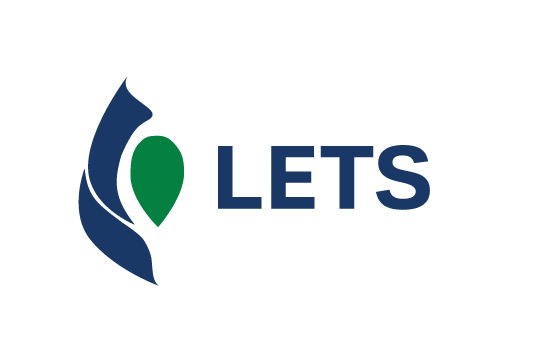In the week in which World Tourism Day is celebrated and a reflection published in the Veja Magazine and in the The Conversation, Written by Professor Gui Lohmann , Glauber Eduardo de Oliveira Santos and for me, in which we listed 5 reasons about the difficulty of advancing in international tourism in Brazil, I return to the theme that motivated me in the construction of new paradigms while I was in charge of the International Marketing, Business and Sustainability Board of Embratur.
A recent big jump in international tourism in Brazil, with records of historical series, happened between 2002 and 2015, a period in which the inflow of foreign exchange expanded 134% (from US$ 2.27 billion to US$ 5.81 billion - source Central Bank of Brazil ), the entry of foreigners grew 66% (from 3.7 million to 6.3 million, even before the Rio 2016 effect - source Federal Police and Ministry of Tourism ) and the total volume of air tickets in the country increased more than three times (from 31 million to 100 million - source ANAC - National Civil Aviation Agency ). A set of factors contributed, among them: the improvement of Brazil's international image (soft power), more flights to and within the country, and also with the creation of the Ministry of Tourism , in 2003, the exclusive dedication of EMBRATUR - Brazilian Tourist Board support for international marketing, marketing and promotion, including new possibilities for international communication such as Visit Brazil . Despite these advances, and current ones as well (since 2022/2023, in the post-pandemic), the numbers of international tourism in Brazil represent a "stagnation", and do not reflect the growth vis-à-vis its immense potential.
One of the greatest legacies of Embratur as an institution dedicated to international promotion, under the presidencies of Eduardo Sanovicz (in memoriam) and Jeanine Pires , possible from the presidency of Caio Luiz Cibella de Carvalho , leader of one of the most structuring policies of Brazilian tourism, the National Program for the Municipalization of Tourism - PNMT, was the creation of the Aquarela Plan, the Brazil's first International Marketing Plan (2004) and Brazil Brand (2005) .
The avant-garde Aquarela remained for two decades (2004-2024) as the paradigm of Brazilian international promotion, despite advances and setbacks in investments and/or strategic directions over these years. There has never been a structural change in the Plan's matrix, and its logic of international promotion developed from priority markets and tourism segments has remained in force, with offline decision-making processes mainly based on physical presence abroad, on a permanent basis (Brazilian Tourism Offices - EBTs, discontinued after 2015) or with face-to-face and sporadic/temporary actions, such as training, events or fairs, mostly but not exclusively, in models that innovated in formats and/or content, maintaining their offline B2B or B2C logics.
In order to achieve a new leap in international tourism, I believe that Brazil needs to revisit the logic of promotion and its complex variables. Just to focus on one of them, in this article, I'm going to talk about promotion. There are many other variables involved, of course. The creation of a new International Tourism Marketing Plan in Brazil has always been my guide, and also my greatest pride for having structured it: it is a legacy promise that I left, because, yes, I worked with the perspective of building a legacy and not a "project counter".
This proposal alters logics and brings to its center a new modeling of the Brazilian tourism trade promotion system, as a necessary advance to the legacy of 2004. It didn't come on suddenly. On the contrary, it was built from the analysis of the results of recent years, the projection of future scenarios for the international promotion of Brazil, the lessons learned from proud participation in the creation and implementation of Aquarela and its main programs (mine and many other professionals). Also, and mainly, reflects the contribution of brilliant professionals who participated in the discussions published in the Guidelines for a Better Future, Based on People, Sustainable Development and Innovation in Brazilian Tourism (credits indicated in the document) , as well as friends, and some former colleagues, talented and experienced, with whom I had the privilege of working at Embratur and outside it. A new marketing plan complements planning, as a strategic indicator of directions, based on research and direction of future opportunities, but is now coupled with a broader, more robust system centered on technologies such as Artificial Intelligence (AI) and Customer Relationship Management (CRM), and on necessary premises of diversity and sustainability, in the face of climate change. To create cohesion among stakeholders and strengthen direction, it is complemented with a strategic and hybrid event, hosted in Brazil and with international participation. The country message needs to have coherence and, for that, a single direction from the International Tourism Marketing Planning of Brazil.
This new model focuses on people, regardless of their place of residence. They are foreign tourists and their interests, foreign and Brazilian stakeholders/individuals, from the private and public sectors (in that order), as well as the press and opinion makers of different profiles and origins. These people are brought Brazil's competitive differentials, also based on means of access/transport, consumption trends, sustainability, climate actions, and ecosystem regeneration (nature and cultures), through technologies (AI, CRM, online platforms for communication, interaction, and engagement).
The replacement of markets and segments, as a rule, by people and their interests, should take place through the centrality of personas, to be actively worked on as the central target audience of the new international promotion. Identified and brought into a robust and personalized CRM, with AI and new technologies applied, they need to be fed with content of their exclusive interest. They should include general themes related to Brazil, for image building and soft power (indirect influence), hospitality and tourism experiences, opportunities for commercial partnerships, outstanding initiatives in the country, and additions that impact their travel decision, in rational and emotional terms.
The central point of the new international tourism marketing planning is to renew the matrix of the Aquarela Plan, considering its successes and challenges, and adding the technologies and accelerated perspectives of the post-pandemic 21st century. Research indicates that experiences with specific and at the same time complementary interests (such as nature and gastronomy; cities and relaxation; community tourism and luxury), sustainability and climate actions, transport facilities and technologies should be essential.
The cost-benefit ratio of the offline model, essential for the first big leap in Brazilian international tourism, has already shown the need for adjustments. It is only necessary to analyze the amount of investment needed to carry out a quality action in global cities with high emitting potential for Brazil, such as New York, London or Paris, and the results derived, to understand that it is necessary to change.
The foundations of the new are already born with diversity, inclusion, technologies, sustainability and climate actions, regeneration, integration with other sectors, and also directed to the fluid profiles of travelers with interests in experiences in which Brazil has excellence, as well as in commercial partners. This in a structuring way, with robust platforms. There is less and less room for retreats, especially in the competitive environment that is international promotion.
Rather than information primarily related to geographic markets, the interests of the foreign public and their communities (aggregated in increasingly globalized and online dynamics) become essential for investment decisions. I cite as an example people interested in nature regeneration initiatives, who consume content in English: they can be in Canada, Chile, Poland or Sweden, and be equally impacted, efficiently, by various types of online channels and partners, regardless of whether an event is held in a city in their countries of residence, with the objective of information and results of conversion into sales.
While I was on the New York subway last week, I caught a glimpse of a lady sitting next to me, for long minutes, interacting on the New York City app. FARM Rio , carefully observing items of Brazilian fashion. On her cell phone, she also needs to arrive, immediately after accessing this content, for example, information and experiences that add to the interest in fashion, including context-neutral programs and trips to the country of origin of talented designers, with companies specializing in niche travel and with the partner airline of nature regeneration that inspires Farm Rio's prints, just to give a quick example.
In this new model, any new, emerging or mature Brazilian experiences fit, as its content is directed to the demand of the personas, regardless of their residence, and here there are unlimited opportunities.
Permanent presence becomes directed to the construction and maintenance of ultra-strategic partnerships, and to the ability to reach high-value tourists, connected with the most expensive values in Brazil, always focusing on greater cost-benefit of the investment. Temporary presence, such as when holding or participating in offline events, always with significant investments, especially in strong foreign currency, becomes essential when there is a set of personas (people, B2B, B2C, opinion leaders, strategic stakeholders, etc.) with objective interests, in a certain location, or in official calendars of fairs that generate business. The deliveries in these actions become, therefore, directed to a group of people, known and easier to access, for refined assertiveness in the cost-benefit.
All actors in the tourism chain, such as hospitality or experience and receptive enterprises (in Brazil), emissives (abroad), governmental, federal, state and municipal institutions (Brazilian), as well as segmented associations, operators, hotels, airlines, clubs and communities of specific interests, brands of goods or services with convergent values, new partners (obvious or unusual), become structuring members of this new system of trade promotion.
With limited resources for international promotion, it is not possible to imagine a new great leap if promotion is still based on a matrix dating from the beginning of the twenty-first century, already in the middle of its third decade. A new Aquarela is needed, equally avant-garde in current times, based on the logic that the export of tourism services is a business that can finance constant improvements for the country, including the much-needed conservation of nature and the regeneration of our ecosystems.


